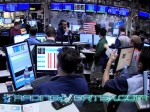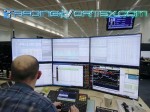Table Of Contents:
- Understanding Forex Trading:
The Minimum Capital Requirement:
Risk Management in Forex Trading:
Leverage: Friend or Foe?
Setting Realistic Expectations:
Strategies for Trading with $100:
Choosing the Right Broker:
Demo Trading: Practice Makes Perfect.
Building a Trading Plan:
Common Mistakes to Avoid:
Success Stories with a Small Capital:
Conclusion: Is $100 Enough to Start Forex?
Understanding Forex Trading:
Forex trading, short for foreign exchange trading, is a dynamic and vast financial market where currencies are bought and sold. It's a global marketplace where traders aim to profit from the fluctuations in currency exchange rates. In this section, we will provide you with a comprehensive understanding of the fundamentals of forex trading, including how it works, the various types of forex markets and instruments, and the pros and cons associated with this fascinating endeavor.
What is Forex Trading and How Does it Work?
At its core, forex trading involves the simultaneous buying of one currency and selling of another. These transactions are executed in currency pairs, where one currency is termed the base currency, and the other is the quote currency. The exchange rate between these two currencies determines their relative value.
Forex trading takes place in a decentralized manner, with no physical exchange. Instead, it operates 24 hours a day, five days a week, across various financial centers worldwide, including New York, London, Tokyo, and Sydney. This continuous operation allows traders to respond to global economic events and news that impact currency prices.
The Different Types of Forex Markets and Instruments:
Forex markets come in various forms, catering to different types of participants and trading styles:
- Spot Market: The spot forex market involves the immediate exchange of currencies at the current market price. It's the most common type of forex trading and is favored by retail traders.
- Forward Market: In the forward forex market, contracts are agreed upon to exchange currencies at a future date, often used by businesses to hedge against currency risk.
- Futures Market: Similar to forwards, futures contracts specify the future exchange of currencies but are standardized and traded on organized exchanges. Futures contracts are often used by institutional investors.
- Options Market: The forex options market gives traders the right, but not the obligation, to buy or sell a currency pair at a predetermined price and date. This offers flexibility and risk management strategies.
The Pros and Cons of Forex Trading:
Forex trading offers several advantages, including:
- Accessibility: The forex market is highly accessible, allowing traders to participate with relatively small capital, such as $100. It's also accessible 24/5, making it convenient for traders across different time zones.
- Liquidity: With its immense trading volume, the forex market is highly liquid, meaning you can enter and exit positions with ease, often without causing significant price fluctuations.
- Leverage: Forex brokers often offer leverage, which allows traders to control larger positions with a relatively small amount of capital. While this can amplify profits, it also increases the potential for losses.
However, forex trading also presents challenges:
- High Risk: The leverage available in forex trading can lead to substantial losses if not used cautiously. It's vital to have a solid risk management strategy in place.
- Complexity: Understanding the factors influencing currency movements, such as economic indicators, geopolitical events, and market sentiment, can be complex and requires continuous learning.
- Emotional Discipline: Successful forex trading demands emotional discipline to avoid impulsive decisions and stick to a well-defined trading plan.
In conclusion, understanding the basics of forex trading is the first step towards becoming a proficient trader. The forex market's unique characteristics, including its 24/5 operation, diverse instruments, and accessibility, make it an appealing choice for traders worldwide. However, it's essential to be aware of the risks involved and commit to ongoing education and disciplined trading practices to navigate this dynamic market successfully.
The Minimum Capital Requirement:
One of the critical considerations when embarking on a forex trading journey, especially with a limited budget, is determining the minimum capital required. In this section, we will delve into the factors influencing the minimum capital requirement, how to choose a broker with low minimum deposit requirements, and the importance of calculating position size and risk-reward ratios for each trade.
How Much Money Do You Need to Start Forex Trading?
The minimum capital required for forex trading can vary widely based on several factors:
- Broker Requirements: Different brokers impose varying minimum deposit requirements. While some brokers allow you to open an account with as little as $1, others may require a minimum deposit of $100 or more. It's essential to research and choose a broker that aligns with your budget.
- Trading Style: Your trading style and strategy also influence the minimum capital you need. For example, a day trader who executes multiple trades in a single day may require a larger capital base to cover potential losses, whereas a swing trader who holds positions for days or weeks might need less capital.
- Risk Tolerance: Your risk tolerance plays a significant role. A trader willing to take higher risks might start with a smaller capital amount, while a conservative trader may opt for a larger capital base to minimize risk.
- Account Leverage: The leverage offered by your chosen broker impacts how much capital you need. Higher leverage allows you to control larger positions with less capital, but it also amplifies the risk of significant losses.
- Risk Management: Regardless of your capital, effective risk management strategies are crucial. Risking more than a small percentage of your trading capital on a single trade is generally considered risky.
How to Choose a Broker with Low Minimum Deposit Requirements?
Selecting the right broker is paramount when you have a limited capital budget. Here are some tips for choosing a broker with low minimum deposit requirements:
- Research: Conduct thorough research on various brokers to find one that aligns with your budget. Consider factors like regulatory compliance, trading platforms, customer support, and fees.
- Demo Accounts: Many brokers offer demo accounts that allow you to practice trading with virtual funds. Utilize these accounts to test a broker's platform and services before committing real capital.
- Leverage: Assess the leverage options provided by the broker. While higher leverage can allow you to trade with less capital, it also increases risk. Choose a level of leverage that matches your risk tolerance.
- Regulation: Opt for brokers regulated by reputable authorities. Regulatory oversight ensures a higher level of security for your funds.
- Account Types: Look for brokers that offer different account types, including micro or mini accounts. These account types often have lower minimum deposit requirements, making them suitable for traders with limited capital.
How to Calculate the Position Size and Risk-Reward Ratio for Each Trade?
Regardless of your capital size, it's crucial to calculate the position size and risk-reward ratio for each trade:
- Position Size: Determine the size of your position based on the percentage of your capital you are willing to risk on a trade. A common rule is to risk no more than 1-2% of your trading capital on a single trade. Calculate the position size accordingly.
- Stop-Loss Orders: Set stop-loss orders to limit potential losses. The distance between your entry point and the stop-loss level determines the number of pips you are risking.
- Risk-Reward Ratio: Evaluate the potential reward compared to the risk in each trade. A typical risk-reward ratio might be 1:2, meaning you aim to make twice the amount you are risking.
By adhering to these principles, you can effectively manage your risk and protect your trading capital, regardless of its size.
In summary, the minimum capital requirement for forex trading can vary widely and depends on multiple factors, including your broker's requirements, trading style, risk tolerance, and account leverage. Selecting a broker with low minimum deposit requirements and implementing sound risk management practices is vital for traders with limited capital. Calculating position sizes and risk-reward ratios for each trade ensures responsible and disciplined trading, which is key to long-term success in the forex market.
Risk Management in Forex Trading:
Risk management is the bedrock of successful forex trading, and it becomes even more critical when you're trading with limited capital. In this section, we'll explore the importance of risk management in forex trading, delve into the different types of risks involved, and equip you with essential risk management techniques and tools to safeguard your capital and maximize your profits.
What is Risk Management and Why is it Important for Forex Trading?
Risk management in forex trading involves a set of practices and strategies aimed at minimizing potential losses while optimizing the chances of profitability. It's a fundamental aspect of trading because the forex market is inherently volatile and can quickly lead to substantial gains or losses.
Here's why risk management is crucial:
- Capital Preservation: Effective risk management ensures that you don't deplete your trading capital due to a single or a series of losing trades.
- Emotional Stability: It helps you maintain emotional discipline and avoid impulsive decisions that can lead to significant losses.
- Consistency: Risk management fosters consistency in your trading approach, enabling you to stick to your trading plan over the long term.
- Survival: By managing risk, you increase the likelihood of surviving and thriving in the forex market, even when faced with adverse market conditions.
The Different Types of Risks Involved in Forex Trading:
Forex trading presents several types of risks, including:
- Market Risk: This is the risk of losing money due to unfavorable movements in currency prices. Market risk is the most apparent risk in forex trading and is influenced by economic events, geopolitical developments, and market sentiment.
- Leverage Risk: While leverage can amplify profits, it also magnifies losses. Traders using high leverage can quickly find themselves in significant debt if the market moves against their positions.
- Interest Rate Risk: Forex traders may be exposed to interest rate risk when holding positions overnight. Differences in interest rates between the two currencies in a pair can impact the cost or benefit of holding a position.
- Counterparty Risk: This risk pertains to the possibility of the broker or financial institution you're trading with defaulting on their obligations. Choosing a reputable, regulated broker can mitigate this risk.
- Psychological Risk: Emotional responses to trading can lead to irrational decision-making. Fear, greed, and overconfidence can cloud judgment and result in poor trade execution.
The Risk Management Techniques and Tools to Protect Your Capital and Maximize Your Profits:
Effective risk management involves a combination of techniques and tools. Here are some essential strategies to consider:
- Set Stop-Loss Orders: Determine a predefined point at which you'll exit a losing trade to limit potential losses. This ensures that your losses are controlled and within your risk tolerance.
- Use Take-Profit Orders: Similar to stop-loss orders, take-profit orders specify the price at which you'll exit a winning trade to secure profits.
- Position Sizing: Calculate the appropriate position size based on the percentage of your capital you're willing to risk per trade. This helps maintain consistency and prevents overexposure.
- Diversification: Avoid putting all your capital into a single trade or currency pair. Diversifying your portfolio can help spread risk.
- Risk-Reward Ratio: Evaluate the potential reward compared to the risk in each trade. A favorable risk-reward ratio can improve your chances of profitability.
- Use Leverage Wisely: While leverage can magnify gains, it should be employed cautiously. Lower leverage levels reduce the risk of significant losses.
- Risk Management Software: Consider using risk management software or calculators to assist in determining position size and risk levels.
- Regular Review: Continuously assess your risk management strategy and adjust it as needed based on your trading performance and changing market conditions.
In conclusion, risk management is the cornerstone of successful forex trading. It is imperative, especially when trading with limited capital, to protect your investments and preserve your ability to participate in the market over the long term. By understanding the types of risks, implementing prudent risk management techniques, and maintaining emotional discipline, you can navigate the forex market with confidence and increase your chances of achieving sustained profitability.
Leverage: Friend or Foe?
Leverage is a double-edged sword in the world of forex trading, capable of magnifying both profits and losses. In this section, we will explore the concept of leverage in forex trading, understand how it works, and examine the benefits and drawbacks of using leverage in your trading endeavors. Additionally, we'll discuss how to choose the appropriate level of leverage that aligns with your trading style and goals.
What is Leverage and How Does it Work in Forex Trading?
Leverage is a financial tool that allows traders to control a larger position size than their available capital. It is offered by brokers and is expressed as a ratio, such as 50:1, 100:1, or even higher. The first number in the ratio represents the capital you need to control a particular position size, while the second number indicates the actual position size you can control.
The Benefits and Drawbacks of Using Leverage in Forex Trading:
Benefits of Leverage:
- Capital Efficiency: Leverage allows traders to access the forex market with a smaller initial investment. This makes it more accessible for retail traders with limited capital.
- Magnified Profits: When used wisely, leverage can amplify profits. A small price movement in your favor can result in significant returns on your investment.
- Portfolio Diversification: Leverage enables traders to diversify their trading portfolio by participating in multiple trades across different currency pairs.
Drawbacks of Leverage:
- Magnified Losses: Just as it amplifies profits, leverage also magnifies losses. A small adverse price movement can lead to substantial losses, and if the market moves against your position, you may face a margin call.
- Interest Costs: Leveraged positions often entail borrowing funds from the broker, which can result in interest costs, particularly if you hold positions overnight.
- Emotional Stress: High levels of leverage can induce emotional stress, making it challenging to maintain a disciplined and rational approach to trading.
- Overtrading: The allure of leverage can tempt traders to overtrade or take positions that are too large relative to their capital, increasing the risk of significant losses.
How to Choose the Appropriate Level of Leverage for Your Trading Style and Goals?
Selecting the right level of leverage is a critical decision in forex trading. Here's how to do it:
- Assess Your Risk Tolerance: Evaluate your risk tolerance honestly. If you are risk-averse and prone to anxiety over large losses, consider lower leverage levels.
- Understand Your Trading Style: Your trading style plays a significant role. Scalpers, who seek to profit from small price movements in short timeframes, may use higher leverage, while swing traders might opt for lower leverage.
- Consider Volatility: Be aware of the currency pairs you intend to trade. More volatile pairs may require lower leverage to manage risk effectively.
- Set Risk Management Rules: Establish strict risk management rules, including position sizing, stop-loss orders, and risk-reward ratios. Ensure your chosen leverage level aligns with these rules.
- Demo Trading: Before using leverage with real capital, practice with a demo account to understand its impact on your trading and refine your strategy.
- Start Conservatively: If you're uncertain, start with lower leverage and gradually increase it as you gain experience and confidence.
In conclusion, leverage is a powerful tool that can enhance trading opportunities in the forex market, but it should be used cautiously. It is neither inherently good nor bad but rather depends on how it aligns with your trading objectives, risk tolerance, and risk management strategies. By understanding the benefits and drawbacks of leverage and selecting an appropriate level that suits your trading style and goals, you can harness its potential while mitigating its risks. Remember that successful forex trading involves a balance of skill, discipline, and prudent risk management.
Setting Realistic Expectations:
Setting realistic expectations is a pivotal aspect of forex trading, especially when starting with a limited capital. In this section, we will explore the significance of having grounded expectations in forex trading, debunk common myths and misconceptions, and provide guidance on how to establish attainable goals and maintain a positive and realistic mindset throughout your trading journey.
Why Setting Realistic Expectations is Crucial for Forex Trading, Especially with a Small Capital?
Forex trading, often portrayed as a path to quick riches, can create unrealistic expectations among novice traders. However, understanding the following points is vital:
- Complexity of the Market: The forex market is intricate, influenced by a myriad of factors, including economic data, geopolitical events, and market sentiment. Achieving consistent profits requires time, knowledge, and discipline.
- Risk of Loss: While forex trading offers the potential for significant gains, it also carries the risk of substantial losses, which can be magnified when using leverage.
- No Guaranteed Success: There are no guarantees in forex trading. Even experienced traders experience losses. Having realistic expectations helps you cope with setbacks.
- Long-Term Perspective: Success in forex trading often comes over the long term. Short-term gains are possible, but sustainable profitability requires patience and persistence.
The Common Myths and Misconceptions About Forex Trading:
It's crucial to dispel common myths and misconceptions surrounding forex trading:
- Get Rich Quick: Myth: "Forex trading is a fast track to wealth". Reality: "It requires learning, practice, and discipline, and success is not immediate".
- Always Profitable: Myth: "Expert traders never lose money". Reality: "Losses are part of trading, even for seasoned professionals".
- Emotions Don't Matter: Myth: "Emotions don't impact trading". Reality: "Emotional control is essential for making rational decisions and managing risk".
- Luck Plays a Major Role: Myth: "Success in forex trading is mostly luck". Reality: "Skill, strategy, and knowledge are primary factors in long-term success".
How to Set Realistic and Achievable Goals and Objectives for Forex Trading?
To establish realistic goals and objectives in forex trading:
- Educate Yourself: Invest time in learning about the forex market, trading strategies, and risk management. Knowledge is the foundation of realistic expectations.
- Start with Small Goals: Begin with modest, achievable goals. Aim for consistent, small profits rather than unrealistic windfalls.
- Focus on Process, Not Just Outcomes: Concentrate on executing your trading plan correctly rather than obsessing over profit or loss. A well-executed strategy can lead to favorable outcomes over time.
- Keep a Trading Journal: Maintain a trading journal to track your performance, identify strengths and weaknesses, and learn from your experiences.
- Seek Mentorship: Consider learning from experienced traders or mentors who can provide guidance and share their insights.
How to Maintain a Positive and Realistic Mindset and Attitude Towards Forex Trading?
A positive and realistic mindset is essential for long-term success:
- Accept Losses: Acknowledge that losses are part of trading. Focus on learning from them rather than dwelling on them.
- Stay Disciplined: Adhere to your trading plan and risk management rules consistently. Emotional discipline is key to maintaining a realistic mindset.
- Avoid Overtrading: Resist the temptation to overtrade due to impatience or greed. Stick to your strategy and stay patient.
- Continuous Learning: Stay committed to ongoing learning and improvement. The forex market is dynamic, and adapting is crucial.
- Stay Informed, Not Overwhelmed: Stay informed about market developments, but avoid information overload, which can lead to emotional stress.
In conclusion, setting realistic expectations is paramount in forex trading, particularly when starting with limited capital. The complexities of the market, the risk involved, and the need for a long-term perspective require traders to approach forex with a clear understanding of what is achievable. Dispelling common myths, setting achievable goals, and maintaining a positive yet realistic mindset are essential for navigating the challenges and opportunities that forex trading presents. Remember that forex trading is a journey that rewards those who approach it with patience, discipline, and a balanced perspective.
Strategies for Trading with $100:
Trading with a limited capital of $100 requires a tailored approach to maximize your chances of success while managing risk effectively. In this section, we will explore various trading strategies that are suitable for smaller trading accounts, discuss the advantages and disadvantages of each strategy, and provide insights on how to apply them in different market conditions and situations.
The Best Strategies that Can Help You Start Forex Trading with $100 or Less:
Micro-Lot Trading:
- Advantages: Micro-lot trading allows you to trade smaller position sizes, reducing the risk per trade. It's an excellent choice for beginners with limited capital.
- Disadvantages: Profits may be relatively small, but it allows for better risk management.
Swing Trading:
- Advantages: Swing trading involves holding positions for several days to weeks, making it suitable for part-time traders. It allows for more extended price movements to play out, potentially increasing profitability.
- Disadvantages: It requires patience and may not provide frequent trading opportunities.
Scalping:
- Advantages: Scalping involves making small, quick trades to capitalize on minor price movements. With a disciplined approach, it can lead to consistent gains.
- Disadvantages: Scalping requires a high level of focus and can be mentally demanding. Transaction costs can also impact profits.
Day Trading:
- Advantages: Day trading involves opening and closing positions within the same trading day. It allows you to avoid overnight risk and capture intraday price movements.
- Disadvantages: Day trading requires dedication and constant monitoring of the markets. Transaction costs can accumulate with frequent trading.
Trend Following:
- Advantages: Trend-following strategies involve identifying and riding established market trends. They can provide significant profits when trends are strong and sustained.
- Disadvantages: Identifying the beginning and end of trends can be challenging, leading to potential losses in ranging markets.
How to Apply Each Strategy in Different Market Conditions and Situations?
Micro-Lot Trading:
- Use proper risk management to ensure each trade does not risk more than 1-2% of your account.
- Focus on currency pairs with lower volatility to reduce potential losses.
- Be patient and wait for clear trading opportunities.
Swing Trading:
- Identify key support and resistance levels to enter and exit trades.
- Look for technical and fundamental factors supporting the potential for longer-term price movements.
- Set wider stop-loss orders to allow for price fluctuations.
Scalping:
- Use short timeframes (e.g., 1-minute or 5-minute charts) for quick trades.
- Look for liquid currency pairs with tight spreads.
- Maintain strict discipline and stick to predefined entry and exit points.
Day Trading:
- Focus on high-liquidity currency pairs with clear intraday trends.
- Develop a solid trading plan with predefined entry and exit points.
- Monitor economic calendars for news releases that can impact markets.
Trend Following:
- Use technical indicators such as moving averages and trendlines to identify trends.
- Be patient and wait for confirmed trend reversals before exiting positions.
- Consider using trailing stop-loss orders to capture more significant gains during strong trends.
In conclusion, trading with a $100 account requires careful selection of trading strategies that align with your risk tolerance and capital limitations. Each strategy has its advantages and disadvantages, and success depends on your ability to apply them effectively in different market conditions. Regardless of the strategy chosen, discipline, risk management, and continuous learning are essential for achieving long-term success in forex trading with a limited capital base.
Choosing the Right Broker:
Selecting the right forex broker is a crucial decision, particularly when you're starting with a small capital of $100. In this section, we will explore the significance of choosing the right broker, discuss the factors you should consider when making your choice, and highlight some of the best brokers that offer low minimum deposit requirements and cater to beginner traders.
Why Choosing the Right Broker is Important for Forex Trading, Especially with a Small Capital?
Your choice of broker can significantly impact your trading experience and overall success. Here's why selecting the right broker is vital, especially when you have limited capital:
- Safety of Funds: A reputable broker ensures the safety of your funds. Choose a broker that is regulated by a respected financial authority to protect your capital from fraud and mismanagement.
- Trading Costs: Brokers differ in terms of spreads (the difference between buying and selling prices) and commissions. Lower trading costs can make a significant difference, especially for traders with limited capital.
- Leverage and Margin: Some brokers offer higher leverage levels than others. Be sure to choose a broker that provides the appropriate level of leverage for your risk tolerance and trading style.
- Trading Platforms: The trading platform provided by your broker should be user-friendly, stable, and offer essential trading tools and analysis features.
- Customer Support: Reliable customer support is essential, especially for beginner traders who may require assistance with technical issues or inquiries.
The Factors that You Should Consider When Choosing a Broker:
- Regulation: Ensure that the broker is regulated by a reputable financial authority, such as the U.S. Commodity Futures Trading Commission (CFTC) or the UK Financial Conduct Authority (FCA). Regulatory oversight provides a level of security for your funds.
- Minimum Deposit Requirements: Look for brokers that offer low minimum deposit requirements. Some brokers allow you to open an account with as little as $1, which is ideal for traders with limited capital.
- Trading Costs: Compare spreads and commissions across different brokers. Lower trading costs can have a significant impact on your profitability, especially when trading with a small account.
- Leverage Options: Examine the leverage options provided by the broker. Ensure they offer leverage levels that align with your risk tolerance and trading style.
- Available Currency Pairs: Check the range of currency pairs offered by the broker. A diverse selection allows you to explore different trading opportunities.
- Trading Platforms: Test the broker's trading platform to ensure it meets your needs. Look for platforms that are easy to use and offer the tools and features you require.
- Customer Support: Reach out to the broker's customer support to assess their responsiveness and helpfulness. Reliable customer support is crucial for addressing issues and inquiries promptly.
In conclusion, choosing the right broker is a critical decision for forex traders, especially when starting with a small capital. Consider factors such as regulation, minimum deposit requirements, trading costs, available currency pairs, trading platforms, and customer support when making your choice. Selecting a broker that aligns with your needs and preferences can enhance your trading experience and contribute to your long-term success in the forex market.
Demo Trading: Practice Makes Perfect.
Demo trading, also known as paper trading, is an invaluable step in your forex trading journey, particularly when you're starting with a small capital of $100. In this section, we will explore the concept of demo trading, its benefits and drawbacks, and how to effectively use demo trading to learn, test, and improve your trading skills and strategies.
What is Demo Trading and Why is it Important for Forex Trading?
Demo trading involves using a simulated trading account with virtual funds to practice trading without risking real money. It serves as a training ground for traders to gain experience, test strategies, and build confidence before transitioning to live trading.
Here's why demo trading is crucial, especially for traders with limited capital:
- Risk-Free Learning: Demo trading allows you to learn the ins and outs of forex trading without risking your hard-earned money. It's a safe environment to gain familiarity with the market.
- Strategy Testing: You can test various trading strategies and techniques to determine which ones work best for your trading style and objectives.
- Platform Familiarization: It helps you become proficient with the trading platform offered by your broker, ensuring you can execute trades effectively when you transition to live trading.
- Emotional Control: Demo trading provides an opportunity to practice emotional discipline and decision-making without the pressure of real capital on the line.
The Benefits and Drawbacks of Demo Trading:
Benefits of Demo Trading:
- Risk-Free Environment: As mentioned, demo trading allows you to practice without risking real money. This is especially valuable for traders with limited capital.
- Skill Development: You can hone your technical and analytical skills, from chart analysis to order execution, in a risk-free setting.
- Strategy Refinement: It provides a platform to refine and optimize your trading strategies, helping you identify strengths and weaknesses.
- Confidence Building: Gaining experience and confidence in your abilities is essential before transitioning to live trading.
Drawbacks of Demo Trading:
- Emotional Differences: Trading with virtual funds may not fully replicate the emotional aspect of real trading. The psychological impact of risking real money can be different.
- Overconfidence: Some traders become overconfident in a demo environment, taking risks they wouldn't take with real capital.
- Lack of Real Consequences: Since there are no real consequences for losses in demo trading, it may not fully prepare you for the emotional challenges of live trading.
How to Use Demo Trading to Learn, Test, and Improve Your Trading Skills and Strategies?
- Treat It Seriously: Approach demo trading with the same level of seriousness and discipline as live trading. Avoid impulsive and reckless trading.
- Simulate Real Conditions: Try to simulate the conditions you'll face in live trading, including trading hours, spreads, and leverage. This helps you adjust to the real trading environment.
- Set Clear Goals: Define specific objectives for your demo trading, such as testing a new strategy or practicing risk management techniques.
- Maintain a Trading Journal: Keep a detailed trading journal to record your trades, strategies, and observations. Regularly review and analyze your journal to identify areas for improvement.
- Transition Gradually: When you feel confident in your demo trading results and have developed a sound strategy, consider transitioning to live trading with a small portion of your capital.
- Continue to Learn: Even as you transition to live trading, continue learning and refining your skills. Forex markets evolve, and ongoing education is vital for success.
In conclusion, demo trading is an essential phase for traders, especially those starting with a limited capital of $100. It provides a risk-free environment to learn, practice, and improve your trading skills and strategies. By taking demo trading seriously, simulating real conditions, and treating it as a stepping stone to live trading, you can build the foundation for a successful forex trading journey.
Building a Trading Plan:
A well-structured trading plan is the compass that guides your actions in the forex market, especially when you're starting with a limited capital of $100. In this section, we will delve into the importance of a trading plan, explore its essential components, and provide insights on how to create and follow a plan tailored to your trading style and goals.
What is a Trading Plan and Why is it Important for Forex Trading?
A trading plan is a comprehensive document that outlines your approach to trading in the forex market. It serves as a roadmap, defining your trading goals, strategies, risk management rules, and other critical elements of your trading methodology.
Here's why a trading plan is essential, particularly for traders with limited capital:
- Guidance and Structure: A trading plan provides structure and discipline to your trading activities, helping you make consistent decisions.
- Risk Management: It contains rules for managing risk, including position sizing, stop-loss orders, and risk-reward ratios, which are crucial for preserving capital.
- Emotional Control: By outlining your trading strategy in advance, a plan can help you avoid emotional reactions to market fluctuations.
- Consistency: It fosters consistency in your trading approach, ensuring you stick to a well-thought-out strategy over time.
The Components of a Good Trading Plan:
A robust trading plan typically includes the following components:
- Trading Goals and Objectives: Define clear, achievable goals for your trading journey. These may include profit targets, risk tolerance, and a timeline for achieving your objectives.
- Risk Management Rules: Specify your risk management guidelines, including the percentage of capital you're willing to risk per trade, position sizing, and the use of stop-loss and take-profit orders.
- Trading Strategy: Outline your trading strategy, including the indicators, chart patterns, and technical or fundamental analysis you'll use to identify trading opportunities.
- Trading Schedule: Define your trading hours, including the times and days when you will actively trade, aligning your schedule with your trading style.
- Entry and Exit Criteria: Clearly state the conditions that trigger your entry into a trade and the criteria for exiting, whether it's a take-profit level, stop-loss hit, or a change in market conditions.
- Risk-Reward Ratios: Determine the risk-reward ratio for each trade, ensuring that the potential reward justifies the risk taken.
- Contingency Plans: Plan for unexpected situations, such as technical issues or market volatility. Consider how you will respond in these scenarios.
- Review and Evaluation: Establish a routine for reviewing your trading performance and making necessary adjustments to your plan.
- Psychological Guidelines: Include strategies for managing emotions, such as maintaining discipline and avoiding impulsive decisions.
How to Create and Follow a Trading Plan that Suits Your Trading Style and Goals?
- Define Your Trading Style: Determine whether you are a scalper, day trader, swing trader, or long-term trader. Your trading style will influence the components of your plan.
- Set Clear Goals: Establish specific and achievable trading goals. Whether it's earning a certain amount of profit or achieving a consistent success rate, clear objectives provide motivation.
- Design Your Strategy: Develop a trading strategy based on your chosen style. Use technical and/or fundamental analysis to identify entry and exit points.
- Implement Risk Management: Calculate position sizes based on your risk tolerance and stop-loss levels. Ensure that no single trade can wipe out a significant portion of your capital.
- Test Your Plan: Before trading live, use demo accounts to test your plan thoroughly. This will help you identify any flaws and refine your approach.
- Stay Disciplined: Follow your plan rigorously. Avoid the temptation to deviate from your strategy based on emotions or market noise.
- Review and Adapt: Regularly review your trading plan and performance. Make adjustments as necessary to adapt to changing market conditions or to fine-tune your strategy.
- Stay Informed: Stay updated on market news and developments that could impact your trades. Being informed is a crucial part of your plan.
In conclusion, a well-crafted trading plan is a vital tool for traders, especially those starting with a limited capital of $100. It provides structure, discipline, and a clear roadmap for your forex trading journey. By defining your goals, outlining your strategy, implementing robust risk management rules, and staying disciplined in its execution, you can increase your chances of achieving success and preserving your capital in the challenging yet rewarding world of forex trading.
Common Mistakes to Avoid:
Forex trading, particularly when starting with a small capital of $100, comes with its unique set of challenges. In this section, we will highlight some of the most common mistakes that beginner traders make and discuss the consequences of these errors. Recognizing and avoiding these pitfalls is essential for preserving your capital and increasing your chances of success.
The Most Common Mistakes that Beginner Traders Make When Starting Forex Trading with $100 or Less:
- Lack of Education: One of the most prevalent mistakes is diving into forex trading without adequate education. Many beginners fail to grasp the complexities of the market, resulting in costly errors.
- Overleveraging: Using excessive leverage is a significant blunder. While it can amplify profits, it can also magnify losses, risking the entire capital. Novice traders often underestimate this risk.
- Lack of Risk Management: Failing to implement proper risk management is a grave mistake. Not setting stop-loss orders, risking too much per trade, or ignoring risk-reward ratios can lead to significant losses.
- Overtrading: Beginner traders may overtrade, thinking more trades equate to more profits. However, excessive trading can increase transaction costs and lead to emotional burnout.
- Impulsive Trading: Making impulsive decisions based on emotions or reacting to short-term market fluctuations is a common mistake. Emotional trading often leads to losses.
- Ignoring Technical and Fundamental Analysis: Neglecting both technical and fundamental analysis can result in poor trade decisions. A balanced approach is crucial for informed trading.
- Failure to Keep a Trading Journal: Not maintaining a trading journal is another error. A trading journal helps track performance, identify weaknesses, and refine strategies.
- Chasing Losses: Attempting to recover losses by taking larger risks is a dangerous practice. It can lead to a vicious cycle of further losses.
- Lack of Patience: Forex trading requires patience. Some beginners expect rapid profits and become frustrated when results don't materialize quickly.
- Overconfidence: Early successes can breed overconfidence. It's crucial to remain humble and recognize that forex trading is a continuous learning process.
The Consequences of Making These Mistakes:
Each of these common mistakes can have significant consequences for beginner traders:
- Loss of Capital: Failing to educate oneself and not implementing risk management can result in the loss of the initial $100 capital and potentially more.
- Emotional Stress: Impulsive trading, chasing losses, and overtrading can lead to emotional stress, affecting decision-making and overall well-being.
- Discouragement: Unrealistic expectations and impatience can lead to discouragement and cause traders to abandon their efforts prematurely.
- Recurring Losses: Not learning from mistakes and continuing to make them can result in ongoing losses, making it challenging to recover.
- Missed Opportunities: Ignoring analysis techniques and not maintaining a trading journal can lead to missed opportunities for improvement and profit.
How to Avoid or Overcome These Mistakes?
Avoiding or overcoming these common mistakes requires a disciplined and strategic approach to trading:
- Education: Invest time in learning about the forex market, trading strategies, and risk management. Continuous education is the foundation of successful trading.
- Risk Management: Implement strict risk management rules, including stop-loss orders, position sizing, and risk-reward ratios.
- Emotional Control: Develop emotional discipline. Maintain a calm and rational mindset by adhering to your trading plan.
- Patience: Understand that success in forex trading takes time. Be patient and avoid rushing into trades or overtrading.
- Keep a Trading Journal: Maintain a detailed trading journal to track your performance and identify areas for improvement.
- Balance Analysis: Utilize both technical and fundamental analysis to make informed trading decisions. A balanced approach can lead to more accurate predictions.
- Humble Confidence: While confidence is essential, remain humble and open to learning. Recognize that the forex market is dynamic, and continuous improvement is necessary.
In conclusion, avoiding common trading mistakes is essential for preserving your $100 capital and increasing your chances of success as a beginner trader. By prioritizing education, implementing solid risk management, maintaining emotional discipline, and avoiding impulsive decisions, you can navigate the challenges of forex trading with a small capital more effectively and work toward achieving your trading goals.
Success Stories with a Small Capital:
While starting forex trading with a modest capital of $100 may seem challenging, success stories abound among traders who have overcome limitations and turned small accounts into substantial profits. In this section, we will explore inspiring success stories of traders who began with minimal capital and went on to achieve remarkable results. By learning from these stories, you can gain valuable insights and motivation for your own trading journey.
Success Story 1: Jesse Livermore.
Jesse Livermore, one of the most famous traders in history, started trading with a small amount and became a legendary figure on Wall Street. He began his trading career in the early 1900s with just $5,000, which was a significant sum at the time. Through astute market analysis and disciplined risk management, Livermore grew his capital into millions of dollars. His success was built on his ability to read market trends and use leverage effectively.
Success Story 2: Richard Dennis and the Turtles.
Richard Dennis, a commodities trader, conducted an experiment in the 1980s to determine whether trading skills could be taught. He recruited a group of individuals, known as the "Turtles," and provided them with trading rules and a small capital base. Many of these novice traders went on to achieve substantial success. This experiment demonstrated that with the right training and discipline, traders can start with small accounts and build wealth over time.
Success Story 3: Alexander Elder.
Alexander Elder, a well-known trader and author of "Trading for a Living," began his trading journey with a modest $1,000. Through continuous learning, risk management, and disciplined trading, he grew his capital and eventually became a successful full-time trader and author. Elder's story highlights the importance of education and persistence in forex trading.
Success Story 4: Linda Raschke.
Linda Raschke is another example of a trader who started with limited capital and achieved remarkable success. She began her career as a stockbroker and eventually transitioned to trading futures and forex markets. Raschke's disciplined approach to risk management and her ability to adapt to changing market conditions allowed her to build a successful trading career, earning her a place among the top traders in the industry.
Success Story 5: Catherine Davey.
Catherine Davey is an Australian trader who started her forex trading journey with only $100 in 2003. She used a simple trend-following strategy that relied on price action and moving averages. She was able to grow her account to $30,000 in two years, achieving a return of 300% per year. She then wrote a book about her experience, called “Making Money from Forex Trading”, which became a bestseller in Australia. She also runs a website where she offers trading tips and advice to aspiring traders.
Success Story 6: Bill Lipschutz.
Bill Lipschutz is another renowned forex trader who started with a small capital. He inherited $12,000 from his grandmother when he was a student at Cornell University, and he used it to trade forex in his spare time. He turned his initial capital into $250,000 in four years, but he lost it all in one bad trade. He then rebuilt his account from scratch and became one of the most successful traders at Salomon Brothers, where he earned over $300 million per year.
Lessons and Tips from These Success Stories:
- Continuous Learning: Each of these success stories emphasizes the importance of ongoing education. Successful traders invest time in learning about the markets, technical and fundamental analysis, and trading strategies.
- Risk Management: Effective risk management is a common theme in these stories. Limiting losses and preserving capital are critical to long-term success.
- Discipline: Discipline is a trait shared by all successful traders. Following a well-defined trading plan, adhering to rules, and maintaining emotional control are key factors.
- Adaptability: Market conditions change over time. Successful traders, like those in these stories, are adaptable and open to adjusting their strategies when necessary.
- Patience: Achieving success in trading often takes time. These success stories show that patience and persistence are essential qualities.
- Leverage: While leverage can be a powerful tool, it should be used judiciously and with a clear understanding of its risks.
In conclusion, these success stories demonstrate that starting forex trading with a small capital of $100 or less is not a barrier to success. By learning from these traders' experiences, focusing on education, implementing effective risk management, and maintaining discipline, you can work towards achieving your own trading goals and potentially grow your small account into a more substantial one over time.
Conclusion: Is $100 Enough to Start Forex?
Throughout this comprehensive guide, we've explored the key aspects of forex trading when starting with a limited capital of $100. We've delved into the fundamentals of forex trading, the minimum capital requirements, risk management strategies, the use of leverage, setting realistic expectations, trading strategies, broker selection, the importance of demo trading, building a trading plan, common mistakes to avoid, and inspiring success stories.
Here are the main takeaways:
- Education is Essential: Before risking your hard-earned money, invest time in educating yourself about the forex market, trading strategies, and risk management techniques. Continuous learning is the foundation of success.
- Risk Management is Paramount: Implementing robust risk management practices, including setting stop-loss orders, position sizing, and risk-reward ratios, is crucial to protect your capital.
- Discipline Trumps Capital: Discipline is a common thread among successful traders. Stick to a well-defined trading plan, follow your strategy, and remain emotionally disciplined.
- Leverage with Caution: While leverage can amplify profits, it can also magnify losses. Use leverage judiciously and understand its risks fully.
- Demo Trading is a Must: Practice in a risk-free environment through demo trading to refine your skills, test strategies, and build confidence before transitioning to live trading.
- Create a Solid Trading Plan: A well-structured trading plan is your roadmap to success. It defines your goals, strategies, risk management rules, and helps maintain discipline.
- Avoid Common Mistakes: Recognize and avoid common trading mistakes, such as overtrading, impulsive decisions, and ignoring risk management.
- Learn from Success Stories: Inspiring success stories demonstrate that it's possible to start with a small capital and achieve significant results through education, discipline, and adaptability.
In conclusion, while $100 may be a modest starting point, it is sufficient to embark on a rewarding forex trading journey. Success in forex trading is not solely determined by your initial capital but by your dedication to learning, your ability to manage risk, and your commitment to maintaining discipline. By following the principles and lessons outlined in this guide, you can begin your forex trading endeavor with confidence, work towards your financial goals, and potentially grow your small capital into a more substantial one over time.

















